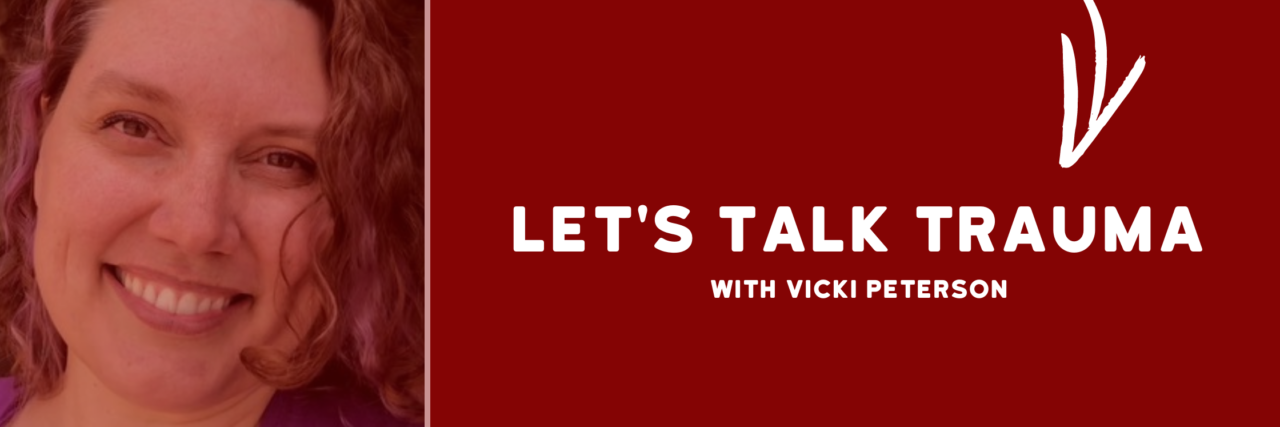Let's Talk Trauma: Why Children Need a Secure Attachment Style
Editor's Note
Follow Vicki’s weekly trauma column “Let’s Talk Trauma” by following her on The Mighty!
Children who do not get their basic needs met from their caregivers experience some of the most difficult challenges a person can face. Trauma at any age can be terrible, but due to the ways our brains grow, childhood trauma during early brain development can cause several lifelong challenges, including higher risk of mental health issues such as anxiety, depression, personality disorders and complex post traumatic stress disorder (PTSD). Early childhood trauma survivors also tend to be more susceptible to autoimmune disorders, migraines, polycystic ovary syndrome, stress-related illnesses and chronic fatigue, to name a few. According to the ACE Study, children who experience four or more adverse childhood experiences are often at higher risk for medical issues later in life.
When children can’t get their basic needs met from their primary caregivers, their brains go into overdrive to compensate. When empathy isn’t mirrored for a child, it’s common for them to go through much of their lives feeling numb, or unable to identify their feelings. Conversely, it’s also common for childhood trauma survivors to become extremely sensitive to the moods and feelings of those around them. They can become highly intuitive and empathic, largely due to their need to hold a constant awareness of whether their caregiver will be a threat to them at any random moment. That extra second or two of awareness helps the child adapt with a coping mechanism such as fight, flight, freeze or fawn. It can become a lifelong challenge to “turn off” their sensitivities, which makes stressful events later in life potentially traumatizing as well.
According to attachment theory, children need to be securely attached to their caregivers by feeling safe, seen, soothed and secure. Meeting these basic needs early in life creates pathways in the brain that can aid in future adverse events and relationships. Whether a child feels safe, seen, soothed and secure is a perception that can only be made by the child, not the caregiver. This is an important distinction, especially for those who were psychologically abused as children, being constantly told by their abusers that they weren’t abused. Reclaiming those feelings of being insufficiently loved is a necessary step for healing.
Researchers have learned so much about neural plasticity in the last few years, and the good news is that it is possible to re-wire the pathways formed from insecure attachment in early childhood. It’s important to find a therapist who specializes in trauma recovery to do this work. Trauma recovery is highly individualistic, and it often takes a lot of trial and error to find the right therapist and the right therapy for your specific needs. Establishing trust and feeling safe with your therapist is an important start. Eye movement desensitization and reprocessing (EMDR) therapy and brain mapping are some ways to help the brain learn new pathways. Somatic therapies can also be helpful, especially in reaching trauma that is stuck in the body. Cognitive behavioral therapy, Dialectal behavioral therapy (DBT) and other common forms of talk therapy can sometimes be a frustrating place to start for childhood trauma survivors, especially when the trauma is rooted in feeling deficient, defective or “not enough.”
Childhood trauma is typically rooted in toxic shame, which can show up in a lot of ways. Sometimes trauma survivors can feel overly criticized when being corrected, due to the erosion of trust in relationships. Often, what childhood trauma survivors need from their therapist is someone who will mirror the kinds of empathetic, nurturing responses they failed to receive as a child.
Much of the therapeutic work in healing childhood trauma revolves around learning how to nurture and re-parent ourselves. It’s important to learn how to have patience and compassion, especially for the parts of us that were previously unloved. There are many ways to do this, including kinder self-talk, pursuing an interest that you were previously denied or recreating fun experiences that you missed out on. Oftentimes, healing an inner child can be done simply by including them in your everyday life. Ask your inner child what they think, how they feel or what they’d like to do. By allowing ourselves as adults to “show up” for our inner children, it is possible to “reprogram” the brain to understand how much we are worthy of unconditional love.
Click here to read more of Vicki’s Column “Let’s Talk Trauma: You May Never Be Completely Healed, And That’s OK”
Lead image courtesy of Super Contributor.

